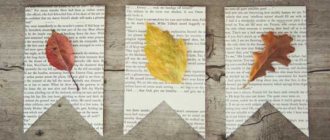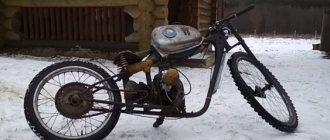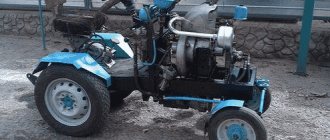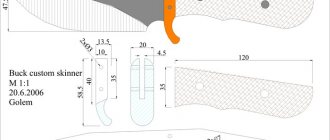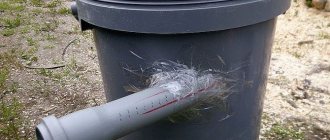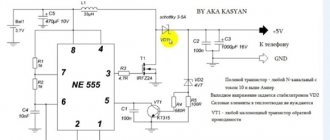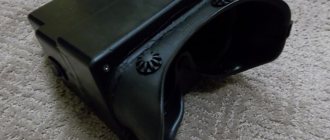Self-production of sprockets for bicycle structures
Self-production of sprockets for bicycle structures
Andre » Jan 31, 2016 09:39 pm
Hello everyone, peace to your homes! Actually, here is my latest work from 2015. Next will be photos. Briefly: I made a 36-teeth drive sprocket for a high-speed bicycle, the work was done at home from what I had. And there was a sheet of metal 2 mm thick and of a suitable area. There was also a green toad to pay as much as 500 rubles for the front triple sprocket from the store, especially since wear killed only the middle sprocket with 38 teeth. Why did I do it at 36? Yes, everything is as simple as a clear day! Marking every 10 degrees around the circumference. I am not attaching a photo of the markings. Everything is so simple there. If you have knowledge of working with drawings on a computer, then making markings for any number of teeth is no problem. I drew with a pencil and a protractor. Go!
1 photo: Marking with a sharp core and starting drilling in two stages, stage 1 with a 4 mm drill, stage 2 with an 8 mm drill. (2nd photo) Drilled with a hand drill. Those who have a drilling machine find it easier, of course. But what happened. Drilling in two stages was dictated by the fact that, firstly, it is difficult to drill 8 mm at once with a hand drill, and secondly, that the risk of a large drill jumping off the mark made with a core is very high. And a mistake at the very beginning, even by 1 mm, will reduce all efforts and efforts to nothing!
Self-production of sprockets for bicycle structures
by Andre » Jan 31, 2016 09:54 pm
Self-production of sprockets for bicycle structures
Andre » Jan 31, 2016 10:59 pm
Self-production of sprockets for bicycle structures
Andre » Jan 31, 2016, 11:07 pm
Self-production of sprockets for bicycle structures
Andre » Jan 31, 2016 11:24 pm
Self-production of sprockets for bicycle structures
Andre » Jan 31, 2016 11:29 pm
Self-production of sprockets for bicycle structures
Andre » Jan 31, 2016 11:33 pm
Drilling the center and mounting holes.
This was my first successful job of making such a part. Before this, there was an attempt to make a star from a small saw blade (samokal), but during drilling the drill was allowed to shift. Since there was no point in working with the disk further, I started working on another workpiece. When marking and marking points for future holes, I strongly recommend fixing the paper with markings in SEVERAL places to the metal, either with magnets or clothespins. Since hitting the core with a hammer may cause the paper to move out. It’s better, of course, for the sheet of metal to lie (and be fixed (with clamps or screws all the way through)) on a stable board. Alternatively, you can make markings on thin plywood. In this case, through this plywood, you will need to drill and not core. In general, the main thing is not to rush And also, I later figured out that when making a star, you can drill holes in two sheets of metal at once. I would not recommend using more than two sheets of metal when drilling with a hand-held electric drill, since as the drilling depth increases, the perpendicularity of the drill to the workpiece will affect the lower stars. However, if you have a drilling machine, this problem disappears. And here you can drill 3 or 4 blanks. If you wish, the star can be painted, or made from stainless steel. I plan to make stars on the front of a different size. Multiples of whole degrees when marking the circle. I hope This material will be of interest to someone. Safe roads and fair winds to everyone! And warmth in the houses, of course! Andrey from Labinsk.
Self-production of sprockets for bicycle structures
kab » 01 Feb 2016, 16:17
Self-production of sprockets for bicycle structures
Andre » 02 Feb 2016, 16:26
Self-production of sprockets for bicycle structures
kab » 05 Feb 2016, 12:47
Re: Making your own sprockets for bicycle designs
Andre » Jul 18, 2022, 11:35 pm
Actually, hello everyone: The sprocket I made has been running for 7,000 km. And I think it will end somewhere after 10 thousand km.
Here I am posting my calculations made using an online calculator:
SPROCKET CALCULATION: Chain pitch 12.7 mm.
With 15 teeth: marking angle 24 degrees / Drilling radius 32.97 mm = 12.710 mm ///
With 18 teeth: marking angle 20 degrees / Drilling radius 36.6 mm = 12.711 mm ///
With 20 teeth: marking angle 18 degrees / Drilling radius 41.6 mm = 12.702 mm ///
With 24 teeth: marking angle 15 degrees / drilling radius 48.7 mm = 12.713 mm ///
With 30 teeth: marking angle 12 degrees / drilling radius 60.8 mm = 12.711 mm ///
With 36 teeth: Marking angle 10 degrees drilling radius 72.9 mm = 12.707 mm ///
With 40 teeth: marking angle 9 degrees / drilling radius 81 mm = 12.710 mm ///
With 45 teeth: marking angle 8 degrees / drilling radius 91.1 mm = 12.710 mm ///
With 48 teeth: marking angle 7.5 degrees // drilling radius 97.1 mm - 12.701 mm (97.2 mm = 12.714) ///
At 60 teeth: marking angle 6 degrees / Drilling radius 121.4 mm = 12.707 mm, (121.5 mm = 12.714)
The fact is that the construction of markings on paper begins with drawing the required number of rays emanating from one point, that is, the center. For this, it is more convenient to use a circular protractor (although it is possible to move it 180 degrees, but there is a risk of making a mistake when rearranging it, the fact is that these are non-professional rulers and therefore hence the accuracy). The price of this piece of plastic is less than the price of a loaf of bread, and in my city was only 18 rubles. Diameter 10 cm. Below is how I calculated it all. The fact is that when drawing markings, what catches your eye is that a circle emerges, built from sharp, equilateral triangles. The base of each of which is the chain step! 12.7 mm. And the vertices of each triangle are the center of the marking, the two long sides are radii and they are adjacent. Why didn’t you take exactly 12,700 m, but even a little more? Because, firstly: it is impossible to achieve accuracy of hundredths, much less thousandths, of mm at home, and secondly, it is obvious that the chain will lengthen due to wear, hence the increase in chain pitch. That is, it is quite possible to make markings and a sprocket for WORN CHAINS, and safely ride on them for many more thousands of km. In general, the topic here is very promising and interesting. I also made a second sprocket, but when installing the new chain I realized that there was no need to replace the drive sprocket. SEE YOU.
How to make a drive star using a drill and grinder
It happens that it is not always possible to find and buy a sprocket with the required number of teeth for a bicycle, moped or motorcycle. I offer a simple and affordable way to make the desired star yourself.
The technology is simple - in the Sprocket program
You need to make a star with the required number of teeth for a specific chain; the program is simple and does not require special knowledge. We open the downloaded archive with the program, which, in addition to the program, contains instructions on how to use it.
Next, open the program itself and in the settings select the necessary parameters for your star.
The circuit parameters indicated in the photo with a red arrow can be taken from this site, and for those who do not understand how to do this, watch the manufacture of the star from start to finish in the video.
After the star has been printed, the sheets need to be connected to each other along a line and glued to metal of the required thickness. I made a star for a moped chain, and took metal 5.5 mm thick.
Next you need to mark all the points so that when drilling you do not move away from the mark. I drill with two drills for accuracy. First I drill with a 4 mm drill, and then with an 8.5 mm drill - the same size as the chain roller.
I cut off the excess metal so that it does not interfere.
In order for all the teeth to be cut equally, I fix the star and the grinder on the same rail, and the angle at which I need to cut is based on the factory star with any number of teeth.
The grinder is on a hinge, which allows it to be raised and lowered. After cutting on one side, I turn the star over to the other side and also cut off the excess.
After this, we need to align the height of the teeth, which I measure using the factory sprocket; for this I attach an angle grinder.
After all the teeth are leveled in height, I trim them a little using a grinder.
Then I check to see if the chain fits properly.
The chain fits perfectly, and I cut a hole in the center of the star for the shaft and triangles for beauty and to reduce weight. The star does not need heat treatment, since large stars have more teeth and the load on each is less.
Watch the entire process of making a star in the video at the beginning of the article.
How to make a sprocket for a chain with your own hands?
Some tips for making sprockets for a chain drive. Boosting the engine usually leads to the need to select the gear ratio in the rear chain drive or replace the chain with a more powerful one. To do this, it is necessary to make new sprockets.
Before you start making them, you need to decide on the type of chain you want to use; domestic chains can be selected from the table:
| Options | Driven roller single row | Drive bushings | |||||
| PR-12.7-1800-1 | PR-12.7-1800-2 | PR-15.875-2300-1 | PR-15.875-2300-2 | PV-9,525-1100 | PV-9,525-1200 | 2PV-9,525-1800 | |
| Step t in mm | 12,7 | 12,7 | 15,875 | 15,875 | 9,525 | 9,525 | 9,525 |
| Distance between inner plates mm | 5,40 | 7,75 | 6,48 | 9,65 | 7,60 | 9,52 | 5,20 |
| Roller or sleeve diameter mm | 8,51 | 8,51 | 10,16 | 10,16 | 5,00 | 6,00 | 6,00 |
| Roller diameter mm | 4,45 | 4,45 | 5,08 | 5,08 | 3,59 | 4,45 | 4,45 |
| Inner plate width mm | 11,81 | 11,81 | 14,73 | 14,73 | 8,80 | 9,80 | 9,80 |
| Internal link width mm | 8,90 | 11,30 | 10,11 | 13,28 | 10,29 | 13,20 | 8,95 |
| Roller length mm | 18,2 | 20,9 | 20,1 | 23,7 | 16,3 | 19,0 | 25,4 |
| Weight of 1 meter of chain kg | 0,62 | 0,71 | 0,80 | 0,96 | 0,44 | 0,62 | 0,92 |
| Breaking load kg | 1800 | 1800 | 2300 | 2300 | 1100 | 1200 | 1800 |
Having selected the required chain and specified the required number of teeth on the sprocket, we proceed to calculating the sprocket.
1. Calculate the diameter of the pitch circle:
Do=t*cosec(180/z) where t is the chain pitch, z is the number of sprocket teeth
The cosec(180/z) values are given below:
| z | cosec180 0 /z | ctg180 0 /z | z | cosec180 0 /z | ctg180 0 /z | z | cosec180 0 /z | ctg180 0 /z |
| 9 | 2.9238 | 2.7475 | 30 | 9.5668 | 9.5144 | 51 | 16.2439 | 16.2131 |
| 10 | 3.2361 | 3.0777 | 31 | 9.8846 | 9.8339 | 52 | 16.5616 | 16.5314 |
| 11 | 3.5495 | 3.4057 | 32 | 10.2023 | 10.1532 | 53 | 16.8809 | 16.8512 |
| 12 | 3.8637 | 3.7321 | 33 | 10.5203 | 10.4727 | 54 | 17.1984 | 17.1693 |
| 13 | 4.1786 | 4.0572 | 34 | 10.8379 | 10.7916 | 55 | 17.5163 | 17.4877 |
| 14 | 4.4939 | 4.3813 | 35 | 11.1560 | 11.1111 | 56 | 17.8354 | 17.8073 |
| 15 | 4.8097 | 4.7046 | 36 | 11.4737 | 11.4301 | 57 | 18.1535 | 18.1260 |
| 16 | 5.1258 | 5.0273 | 37 | 11.7913 | 11.7488 | 58 | 18.4817 | 18.4446 |
| 17 | 5.4423 | 5.3496 | 38 | 12.1093 | 12.0679 | 59 | 18.7693 | 18.7626 |
| 18 | 5.7588 | 5.6713 | 39 | 12.4248 | 12.3875 | 60 | 19.1073 | 19.0811 |
| 19 | 6.0756 | 5.9927 | 40 | 12.7455 | 12.7062 | 61 | 19.4254 | 19.3996 |
| 20 | 6.3925 | 6.3137 | 41 | 13.0639 | 13.0251 | 62 | 19.7429 | 19.1776 |
| 21 | 6.7095 | 6.4347 | 42 | 13.3820 | 13.3446 | 63 | 20.0613 | 20.0363 |
| 22 | 7.0266 | 6.9550 | 43 | 13.6993 | 13.6628 | 64 | 20.3800 | 20.3555 |
| 23 | 7.3439 | 7.2755 | 44 | 14.0178 | 13.9821 | 65 | 20.6987 | 20.6745 |
| 24 | 7.6613 | 7.5958 | 45 | 14.3356 | 14.3007 | 66 | 21.0168 | 20.9930 |
| 25 | 7.9787 | 7.9158 | 46 | 14.6536 | 14.6194 | 67 | 21.3338 | 21.3103 |
| 26 | 8.2863 | 8.2358 | 47 | 14.9720 | 14.9395 | 68 | 21.6537 | 21.6306 |
| 27 | 8.6138 | 8.5555 | 48 | 15.2898 | 15.2571 | 69 | 21.9717 | 21.9489 |
| 28 | 8.9319 | 8.8742 | 49 | 15.6085 | 15.5767 | 70 | 22.2895 | 22.2671 |
| 29 | 9.2490 | 9.1948 | 50 | 15.9260 | 15.8945 | 71 | 22.6068 | 22.5847 |
2. Calculate the diameter of the circle of the protrusions:
De=t*(Kb + ctg(180/z)) where
| number of sprocket teeth | coefficient Kb |
| until 11 | 0,58 |
| over11 to 17 | 0,56 |
| from 17 to 35 | 0,53 |
| over 35 | 0,50 |
3. Calculate the diameter of the circle of the depressions:
r- radius of the depression (r= 0.5025 dp + 0.05mm)
dp is the diameter of the chain roller.
Based on the calculated diameters, you can begin making the sprocket.
MY MOTORCYCLE
There are many reasons to change the gear ratio of a chain drive: if you are converting a motorcycle into an enduro, the driven sprocket should be larger; if you are transforming an enduro into a motard, on the contrary, it should be smaller. Finally, owners of rare motorcycles find it difficult to find replacements for worn parts...
I had two reasons for the modification: firstly, I was building an enduro, and secondly, I increased the working volume of the Izh-PS engine to 400 cm/cc.
The leading “star” has fewer teeth, and there is less work to do with it. But it is possible to make a hole with splines only on a special machine, and to make a driven sprocket, you will need a drill and a machine from a familiar turner. If you accurately mark the workpiece and carefully cut everything out, you can do without turning.
You will need: calipers, an electric drill (preferably a drilling machine), a hacksaw, flat and round files (or “grinder”).
The location of the circles on the workpiece. Dн - outer diameter; Dd — diameter of the pitch circle; Dвn—diameter of depressions; Dnoc - bore diameter, corresponds to the size of the hub.
Estimate how many teeth there should be on the sprocket and select a suitable blank. Its thickness should be the same as that of the standard sprocket. The best material is 30X or 40X steel. You can take another one, but the part will last less. Calculate the outer diameter of the sprocket using the formula and add a few millimeters for processing:
Dн = Dд + 1.2d, where Dн is the outer diameter; Dd — diameter of the pitch circle; d is the diameter of the chain rollers.
where h is the chain pitch (for Izhevsk, for example, 15.875 mm); n is the number of teeth.
In a suitable piece of metal, find the center and draw three circles; pitch, outer and inner (size on the hub) diameters. Copy the landing dimensions from the standard part. Check the markings carefully - if you make a mistake, you will ruin the workpiece. Ask the turner to turn a ring from the workpiece, limited by the circles of the inner and outer diameters of the “star”. All circles must be strictly coaxial! A competent specialist will make your life easier - using the dial of a lathe, you can very accurately draw a pitch circle with a cutter, and it is the most important thing in this part!
On the resulting ring, divide it into segments equal to the chain pitch. There should be as many of them as you entered into the formula, and the distance between the first and last marks is the same as between the others. Mark all the marks and drill holes with a drill with a diameter of 10.1-10.2 mm (the diameter of the Izhevsk chain rollers is 10.16 mm). But before that, check the drill - drill a hole in the same piece of metal. A carelessly sharpened or brought tool can “break” the hole or, conversely, it will turn out to be too small. Then resharpen or replace the drill.
Get a new sprocket with a similar number of teeth. Applying it to the workpiece, outline the contours of the teeth. Saw off the excess and give the teeth the desired shape. I do all this with a grinder, but if you don’t have enough experience with this “precise” tool, one wrong move will ruin the part. Not confident? Work with a hacksaw and a file: so slowly, but surely. When you're done, check your results by wrapping the chain around the sprocket. The rollers should fit tightly into all recesses with minimal clearance. Then use a flat file to remove chamfers from the end surfaces of the teeth (as on a factory sprocket), and with a round file, remove the burrs.
And the last operation is to drill holes for fasteners. If you want the part to last for a very long time, ask the thermist to harden it a little. Don't try to do this yourself! Firstly, the part can “lead” and it will turn into a crooked piece of iron for a landfill. Secondly, it is easy to overheat, and then the teeth will quickly break. But you can do without heat treatment. Modern motorcycles are often equipped with driven sprockets made of duralumin, and they are also quite durable.
Making homemade sprockets for chain drives. Linil's method.
We have already talked about a method for making drive sprockets yourself.
Now let's look at this process with comments from Andrey Stekanov (Linil). It started with the invention of oval driving stars in the 1980s. I wanted one like this. Nobody could do it. The woman technologist said there are no such things. My uncle, a tool maker, did not get involved. I had to do it myself. This technology allows you to build a star simply by marking it with a rod, bypassing the accumulated errors.
1. Take the workpiece and LEFTLY, so that the rod leg does not slip, mark the center:
2. We consider the angular step 360:n (USH)
3. We calculate the pitch diameter: D=S/sin(180/n), where S is the chain pitch, n is the number of teeth.
4. Draw the pitch diameter:
5. Now on the dividing circle you need to select three points, more or less evenly distributed. The number of teeth of our star may not be a multiple of 3, for example 37). Divide through 12, 12, 13. We count the chord:
In our case, for 12, 13 we plot the points:
We count chords for 2, 3, 4, 5, 6, 7, etc. angular steps to build this way:
The dividing circle now serves only a reference function - we make sure that the chords are correct and the points fall on the dividing circle.
Thus, an oval star was made from calculated arcs.
Next we drill. You need to start with a drill 1-2mm, then 5mm and then 0.5-0.7mm larger than the diameter of the chain roller.
Then cut off the excess. The ideal tool is a circular saw, where instead of a saw blade a circle from a grinder is installed. But a grinder and a chisel and file will do.
If you look at the different stars, the points - who knows what. I personally like the cassette teeth on race bikes. There is no point, just the outer radius is 2-2.5mm larger than the pitch. That's what I do.
It is advisable to know the steel for a small star. It undergoes heat treatment. For a big one - as long as it is processed. It does not undergo heat treatment and does not survive hardening as small as it is.
It is not advisable to use laser ironing technology. When printing on paper, the error is unpredictable. Let one point have 0.1 mm. Where is the guarantee that the second one is also 0.1 and not in the same direction?
I mark with a barbell. There are at least two permutations of the bar for each point. Already 0.2 mm. Plus, if the bar is placed according to the core, then the cumulative error is even greater. But the matter is slightly corrected by the fact that the risks should fall on the dividing circle.
Calculation of a chain drive sprocket based on chain pitch
People began using gears back in antiquity. The idea of transmitting torque not through direct contact of two gears, but over a long distance using an endless chain, belongs to the brilliant artist and inventor Leonardo da Vinci. In practice, such drives were implemented at the beginning of the 19th century. In order for the mechanism to work effectively, an accurate calculation of all its elements is necessary, and above all, the sprockets.
Sprockets for chains
Sprockets for drive chains are represented by profiled wheels that have teeth on the surface. These elements of the product are designed to engage with the drive chain during operation. The features are as follows:
- The product is different from standard gears and pulleys. At the same time, the differences are noticeable visually.
- The tooth shape is characterized by the fact that it is not intended for direct engagement and contact during operation.
- In the manufacture of sprockets, a metal characterized by increased wear resistance is used.
- The main characteristic can be called the number of teeth. At the same time, single-row and multi-row versions are produced.
Sprocket ring dimensions
When designing a chain sprocket, it is taken into account that it must perform a number of basic functions:
- transmit torque from the drive shaft to the driven shaft;
- grab and release chain links without jerking or hitting;
- hold the mechanism in the plane of rotation.
To do this, its shape and dimensions must strictly correspond to the calculation results.
According to the recommendations of GOST 591-69, which regulates sprockets for drive roller and bushing chains, the design is based on the following initial parameters:
- chain pitch t;
- number of z waves;
- engagement circle diameter d1;
The main dimensions that determine the geometric shape of the product are:
- pitch circle diameter D div;
- diameter of the protrusion circle D ext;
- radius of depressions r;
Calculation of the parameters of the chain drive sprocket for a given chain pitch is carried out in the following sequence:
- The axes of the link hinges during engagement with the teeth of the chain drive are located on the pitch circle; the diameter is calculated using the formula:
- Calculation of the circumference of the protrusions:
- Calculation of the radius of the depressions (in mm) r = 0.5025 * d1 + 0.05.
- Calculation of the diameter of the circle of the depressions D depression = D division - 2 * r.
When constructing a drawing of a sprocket for a chain drive, D ext is calculated with an accuracy of 0.1 millimeters, other parameters are calculated with an accuracy of 0.01 mm.
Drive sprockets for roller chains
Drive sprockets are designed for direct power transmission. The product is used to create various mechanisms that can have very different purposes. The requirements for the chain drive sprocket are as follows:
- Accuracy of geometric shape. During operation, the element in question is in conjunction with the drive chain. If the accuracy of the geometric shape is low, the device will not operate smoothly, and after a while the drive chain may begin to wear out quickly.
- Dimensional accuracy also matters. During production, the required accuracy is taken into account, since this also reduces the performance of the device.
- The materials used must be highly resistant to wear. That is why, after manufacturing the product, hardening or carburization is carried out, due to which the required performance characteristics are achieved.
- Attention is also paid to the mounting hole for the shaft. It must have a hole for a key, which eliminates the possibility of the fixing element turning.
Features of operation include the fact that at the time of operation, the teeth of the sprocket are in direct contact with the rollers.
Due to this, the degree of surface wear is significantly reduced and the service life is extended. Chain drives can be very different; rotation is often provided by an electric motor or manual drive.
Design of the hub and disk of chain sprockets
The hub and sprocket disc are most often cast or milled as a single piece. The hub is used to secure the product to the drive or driven shaft of the mechanism. It must provide reliable fixation, eliminating axial and radial runout of the part on the shaft. Therefore, high demands are placed on the quality of the internal surface. Fastening is carried out using:
- spline for high-speed and highly loaded chain drives;
- keys for low-speed chain drives.
The hub diameter must satisfy two requirements:
- ensure structural strength;
- do not make it heavier than necessary.
For cast iron parts, it is usually chosen equal to 1.65 of the shaft diameter; for steel parts, the calculation coefficient is reduced to 1.55.
The length of the hub is determined by the nature of the fixation on the shaft with a key or spline and is usually calculated in the range of 1.2-1.5 of the shaft diameter.
For small sprockets, the width of the disk is chosen equal to the width of the tooth. For large-sized products, especially highly loaded ones, the width is increased to 5%, depending on the radius of curvature of the base of the tooth.
Calculated sizes are rounded to the nearest number in the standard size range.
Manufacturing of sprockets to order: requirements and conditions
A fairly wide range means that it is possible to choose a suitable product for a specific mechanism. If a chain drive sprocket with non-standard parameters is required, then you have to order the product from companies that provide the corresponding services.
The features include the following:
- It will not be possible to make such a part yourself, since this requires special equipment.
- When ordering services, you must indicate the basic parameters according to which production will be carried out. An example is the number of teeth, outer diameter, bore diameter, tooth surface hardness and other points.
- Production involves the use of special equipment, usually milling machines. That is why the cost of the drive element, which is produced to order, increases significantly.
- Depending on the type of equipment used, the manufacturing accuracy and quality of the resulting surface depend.
You can make sprockets yourself only if you have special milling equipment. At home it is extremely rare. The cost of a custom-made product depends on the accuracy, type of material used, product dimensions and some other parameters.
In conclusion, quality drive sprockets can last for a long period. That is why it is not recommended to save on purchasing this element of various mechanisms.
Chain sprocket materials
Products are subjected to high impact loads, so steel alloys are used for their manufacture:
- with average carbon content and with alloying additives, hardened to a hardness of 45-55 units;
- subjected to cementation to a depth of 1-1.5 mm and subsequent hardening to 55-60 units.
For low-noise chain drives, materials such as textolite, polyamide and polyformaldehyde plastics are used. They absorb shock from roller chain links, reduce noise and vibration, and extend chain life. This occurs by reducing dynamic loads on the links. Such parts are less durable than steel ones, so chain drives with them are limited in terms of transmitted power. An accurate calculation of the transmission of angular position by a gear chain is carried out when designing control system mechanisms, including for aircraft.
For chain drives with low speed (no more than 2 meters per second) and low dynamic loads, cast iron is also used. By heat treatment, the hardness of products is brought to 350-430 HB units. In severe operating conditions, in agricultural machines and road mechanisms, hardened cast irons with a reduced coefficient of friction are used.
To reduce dynamic loads, noise levels and vibration in high-speed chain transmissions, special coatings are also used - both metal surfacing and spraying of a Teflon layer.
Sprocket ring dimensions
When designing a chain sprocket, it is taken into account that it must perform a number of basic functions:
- transmit torque from the drive shaft to the driven shaft;
- grab and release chain links without jerking or hitting;
- hold the mechanism in the plane of rotation.
To do this, its shape and dimensions must strictly correspond to the calculation results.
According to the recommendations of GOST 591-69, which regulates sprockets for drive roller and bushing chains, the design is based on the following initial parameters:
- chain pitch t;
- number of z waves;
- engagement circle diameter d1;
The main dimensions that determine the geometric shape of the product are:
- pitch circle diameter D div;
- diameter of the protrusion circle D ext;
- radius of depressions r;
Calculation of the parameters of the chain drive sprocket for a given chain pitch is carried out in the following sequence:
- The axes of the link hinges during engagement with the teeth of the chain drive are located on the pitch circle; the diameter is calculated using the formula:
- Calculation of the circumference of the protrusions:
- Calculation of the radius of the depressions (in mm) r = 0.5025 * d1 + 0.05.
- Calculation of the diameter of the circle of the depressions D depression = D division - 2 * r.
When constructing a drawing of a sprocket for a chain drive, D ext is calculated with an accuracy of 0.1 millimeters, other parameters are calculated with an accuracy of 0.01 mm.
Star Selection Options
The above information determines that the chain sprocket is characterized by a fairly large number of different properties that must be taken into account when choosing the most suitable design. Recommendations for selection are the following:
- Outside diameter. This parameter determines how long the drive chain is installed and how much force can be transmitted. The outer diameter varies over a fairly wide range. In addition, too large a diameter does not allow installation in a particular case. With different sprocket diameters, the number of transmitted revolutions is reduced or increased.
- Optimal gear ratio. The concept of sprocket gear ratio has become quite widespread. This value determines how many teeth of the drive element there are on the teeth of the driven element. To determine this indicator, special formulas are used.
- The diameter of the internal mounting hole also matters. This indicator largely depends on the outer diameter and also varies over a fairly wide range. When choosing, it is recommended to pay attention to the size of the keyway.
- The type of material used in the manufacture of the product may affect performance characteristics. In most cases, carbon steel is used, which has sufficient strength and wear resistance. Recently, products made from alloy alloys have become widespread, as they are more resistant to high humidity. In most cases, heat treatment is carried out to significantly improve performance.
- The tooth shape is standard in most cases. It is extremely rare that a product is chosen based on this criterion.
Types of bicycle cassettes and their replacement
11 minutes Author: Mikhail Skvortsov 154 Old bicycles were equipped with an outdated transmission unit called a ratchet. It is screwed onto a large diameter thread onto the rear wheel hub. Its ratcheting mechanism is not a separate unit and cannot operate independently. When removing the ratchet, everything is twisted at once: the sprockets and the ratchet.
There is another way to connect the rear sprockets to the wheel. New bicycles are equipped with a more advanced transmission unit - a cassette. If you need to remove it, you can easily separate the set of sprockets and the independent ratchet mechanism. All modern bicycles have such an easy-to-maintain unit.
Design of the hub and disk of chain sprockets
The hub and sprocket disc are most often cast or milled as a single piece. The hub is used to secure the product to the drive or driven shaft of the mechanism. It must provide reliable fixation, eliminating axial and radial runout of the part on the shaft. Therefore, high demands are placed on the quality of the internal surface. Fastening is carried out using:
- spline for high-speed and highly loaded chain drives;
- keys for low-speed chain drives.
The hub diameter must satisfy two requirements:
- ensure structural strength;
- do not make it heavier than necessary.
Benefits of universal sprocket design
Universal versions of the product in question have become very widespread. The design features of the sprockets are characterized by the following advantages:
- Versatility in use. There are quite a large number of different chain mechanisms that operate via a chain drive. In this case, it does not matter for what purpose the force is transferred.
- Long service life. The use of steel determines that the teeth are subject to long-term operation; to improve the basic performance characteristics, hardening and tempering are carried out, as well as the addition of various substances to change the strength.
- High resistance to environmental influences. As a rule, in the manufacture of a sprocket, steel is used, which contains alloying elements. For example, an increased concentration of chromium causes corrosion resistance.
- Reliability in operation. A sprocket with the correct parameters ensures reliable transmission of force or rotation.
Universal drive elements for drive chains can be found on sale in specialized stores.
A significant disadvantage of the chain drive sprocket is its low corrosion resistance.
That is why the mechanism is often lubricated with motor oil or another similar substance, which can increase the degree of surface protection from environmental influences and reduce wear.
How to remove a bicycle cassette
First of all, you need to prepare the necessary tools:
- cassette retaining ring remover;
- “whip” - a special key to which a bicycle chain (fragment) is attached;
- adjustable wrench.
You can, of course, do without this specific tool. Moreover, there are 2 such methods and both will “work” 100%:
- We get on the bike and go to the nearest specialized store for bicycle parts and tools, purchase the necessary keys and pullers.
- We remove the cassette using screwdrivers, a hammer and various keys - the task will be solved, but the cassette, and some of the other mechanisms of the bicycle, will have to be thrown away.
Be sure to prepare an area with a flat surface, which should be within arm's length of the bicycle - this is how you can save and not lose all the parts of the bicycle cassette.
Step-by-step instructions for removing the cassette:
- The bicycle wheel is removed and a special puller is installed. It is necessary to pay attention to the correct installation of this tool: its splines must completely fit into the grooves of the retaining ring.
- Take the “whip” key in your hands and place it on the sprocket so that a fragment of the bicycle chain on the key is on the teeth of the sprocket. Please note that the handle of the “whip” should be located to the right of the cassette, and the fragment of the tool chain should be at the top.
- An adjustable wrench is placed on the cassette remover and turned counterclockwise. Simultaneously with this movement, it is necessary to firmly hold the “whip” key in a fixed position - thus blocking the movement/scrolling of the sprocket. Please note: in some cases, the chain may jump off during this process, which means severe wear on the cassette sprockets or breakage of the “whip” key. Experts recommend throwing a “whip” over a large sprocket - you can get the desired fixation effect.
- The locking ring is completely unscrewed and the cassette is removed.
Be sure to ensure that the removed cassette, as well as the sprockets and all fasteners, are located in the removable form exactly in the order in which they were in the original version.
After removing the cassette, you can begin cleaning and lubricating it - these procedures are mandatory for regular maintenance of a two-wheeled vehicle.
How to properly shorten a chain on a bicycle with and without squeezing
Many people are interested in cycling at an amateur level. But a suddenly slack chain can greatly ruin the pleasure of a walk. To prevent this from happening, you need to properly care for the vehicle, as well as find out in a timely manner how to shorten the chain on a bicycle and purchase all the necessary tools for this. The work can be done independently, following the recommendations of specialists.
Why disassemble the chain
Only a chain that is tensioned without sagging or distortion ensures effective transmission of torque from the pedals to the rear bicycle axle. The need to disassemble and shorten it may be due to the following reasons:
To determine the optimal length, you need to change the gear so that the chain lies on the largest sprocket at the front and rear. Then the links are opened, pulling it all the way. Having made a mark, add 2-3 more links to prevent increased loads on the transmission.
Those who are not confident in their own abilities are strongly recommended to contact a specialized store. There you can get competent advice and professional technical assistance.
Chain replacement may be required due to severe wear or breakage Quite often, the chain begins to dangle or spin after upgrading the bicycle Chain sagging is possible due to long-term use or changing the set of sprockets
Required Tools
Experts in the field of various life hacks and those who started cycling back in Soviet times recommend using a stone and a nail to disconnect the chain. But, since progress does not stand still, a special tool has long been created for this - the chaintool. It resembles a small vice without a frame. The cost of the device is more than affordable - 500–1000 rubles.
Practice shows that squeezes in “multitools” (especially cheap ones) can withstand a maximum of 3–5 uses. Therefore, for a multi-day hike in areas with difficult terrain, it is better to have a high-quality tool made of high-strength steel in your backpack.
The mechanism of action of the squeeze is extremely simple. The existing stop prevents the plates of the links on the chain from deforming and bending during the process of pushing out the connecting pin (pin). The rotary screw squeezes it out without applying significant effort.
Chain sprocket materials
Products are subjected to high impact loads, so steel alloys are used for their manufacture:
- with average carbon content and with alloying additives, hardened to a hardness of 45-55 units;
- subjected to cementation to a depth of 1-1.5 mm and subsequent hardening to 55-60 units.
For low-noise chain drives, materials such as textolite, polyamide and polyformaldehyde plastics are used. They absorb shock from roller chain links, reduce noise and vibration, and extend chain life. This occurs by reducing dynamic loads on the links. Such parts are less durable than steel ones, so chain drives with them are limited in terms of transmitted power. An accurate calculation of the transmission of angular position by a gear chain is carried out when designing control system mechanisms, including for aircraft.
For chain drives with low speed (no more than 2 meters per second) and low dynamic loads, cast iron is also used. By heat treatment, the hardness of products is brought to 350-430 HB units. In severe operating conditions, in agricultural machines and road mechanisms, hardened cast irons with a reduced coefficient of friction are used.
To reduce dynamic loads, noise levels and vibration in high-speed chain transmissions, special coatings are also used - both metal surfacing and spraying of a Teflon layer.
Bicycle sprocket: why is it needed?
A bicycle is a necessary thing in every home for leisure and a healthy lifestyle. Bicycle rides delight the whole family, and it would be a pity if, by some absurd accident, this vehicle suddenly breaks down. But let’s assume that someone in your family simply outgrew this model, and you decided to buy a new one, or it just so happened that you decided to upgrade and partially change parts.
In a word, you have a slow-moving vehicle that can be disassembled for spare parts without regret. And for our homemade version you will need an asterisk - a metal part that tensions the chain
The asterisk must be freed from all other parts. This is not so easy to do: you will have to use a grinder to cut off the pedal
For an unusual device, you will need another piece of board measuring approximately 30x40 cm. You can use plywood, laminate or a regular board
Place the star in the top third of the board and mark its width with a marker
In the prepared base, you need to make a cut with a grinder to the width of the sprocket so that it is inserted into this part. Next, you will need a little skill in working with metal. The fact is that you need to drill a through hole in the sprocket, and for this you will need a special drill for steel and a drill fixed in a vertical position.
The author used his own device to fix the instrument in a given position
Then you should thread the star into the slot in the board and secure it on the back side to a wooden block using a self-tapping screw.
Then the same block of wood is attached with another pair of screws to the main board. By the way, you will need two identical bars for this invention
The second block is attached on the back side in the lower third of the board. You need to make a recess in it to fix a powerful neodymium magnet
